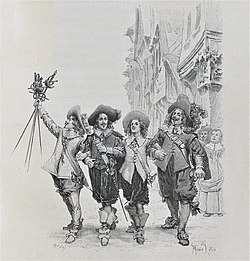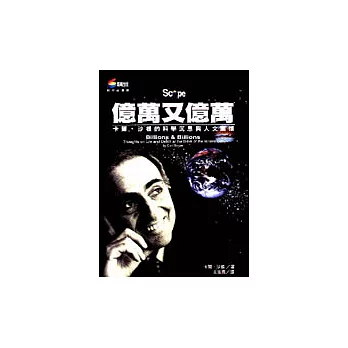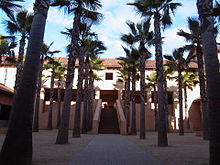The Idea of Order at Key West
by
Wallace StevensShe sang beyond the genius of the sea.
The water never formed to mind or voice,
Like a body wholly body, fluttering
Its empty sleeves; and yet its mimic motion
Made constant cry, caused constantly a cry,
That was not ours although we understood,
Inhuman, of the veritable ocean.
The sea was not a mask. No more was she.
The song and water were not medleyed sound
Even if what she sang was what she heard.
Since what she sang was uttered word by word.
It may be that in all her phrases stirred
The grinding water and the gasping wind;
But it was she and not the sea we heard.
For she was the maker of the song she sang.
The ever-hooded, tragic-gestured sea
Was merely a place by which she walked to sing.
Whose spirit is this? we said, because we knew
It was the spirit that we sought and knew
That we should ask this often as she sang.
If it was only the dark voice of the sea
That rose, or even colored by many waves;
If it was only the outer voice of sky
And cloud, of the sunken coral water-walled,
However clear, it would have been deep air,
The heaving speech of air, a summer sound
Repeated in a summer without end
And sound alone. But it was more than that,
More even than her voice, and ours, among
The meaningless plungings of water and the wind,
Theatrical distances, bronze shadows heaped
On high horizons, mountainous atmospheres
Of sky and sea.
It was her voice that made
The sky acutest at its vanishing.
She measured to the hour its solitude.
She was the single artificer of the world
In which she sang. And when she sang, the sea,
Whatever self it had, became the self
That was her song, for she was the maker. Then we,
As we beheld her striding there alone,
Knew that there never was a world for her
Except the one she sang and, singing, made.
Ramon Fernandez, tell me, if you know,
Why, when the singing ended and we turned
Toward the town, tell why the glassy lights,
The lights in the fishing boats at anchor there,
As night descended, tilting in the air,
Mastered the night and portioned out the sea,
Fixing emblazoned zones and fiery poles,
Arranging, deepening, enchanting night.
Oh! Blessed rage for order, pale Ramon,
The maker's rage to order words of the sea,
Words of the fragrant portals, dimly-starred,
And of ourselves and of our origins,
In ghostlier demarcations, keener sounds.
- See more at: http://www.poets.org/viewmedia.php/prmMID/15749#sthash.3IUW7AoS.dpuf
The Idea of Order at Key West by
Wallace Stevens She sang beyond the genius of the sea.
The water never formed to mind or voice,
Like a body wholly body, fluttering
Its empty sleeves; and yet its mimic motion
Made constant cry, caused constantly a cry,
That was not ours although we understood,
Inhuman, of the veritable ocean.
The sea was not a mask. No more was she.
The song and water were not medleyed sound
Even if what she sang was what she heard.
Since what she sang was uttered word by word.
It may be that in all her phrases stirred
The grinding water and the gasping wind;
But it was she and not the sea we heard.
For she was the maker of the song she sang.
The ever-hooded, tragic-gestured sea
Was merely a place by which she walked to sing.
Whose spirit is this? we said, because we knew
It was the spirit that we sought and knew
That we should ask this often as she sang.
If it was only the dark voice of the sea
That rose, or even colored by many waves;
If it was only the outer voice of sky
And cloud, of the sunken coral water-walled,
However clear, it would have been deep air,
The heaving speech of air, a summer sound
Repeated in a summer without end And sound alone.
But it was more than that,
More even than her voice, and ours, among
The meaningless plungings of water and the wind,
Theatrical distances, bronze shadows heaped
On high horizons, mountainous atmospheres
Of sky and sea.
It was her voice that made
The sky acutest at its vanishing.
She measured to the hour its solitude.
She was the single artificer of the world In which she sang.
And when she sang, the sea,
Whatever self it had, became the self
That was her song, for she was the maker.
Then we, As we beheld her striding there alone,
Knew that there never was a world for her
Except the one she sang and, singing, made.
Ramon Fernandez, tell me, if you know,
Why, when the singing ended and we turned
Toward the town, tell why the glassy lights,
The lights in the fishing boats at anchor there,
As night descended, tilting in the air,
Mastered the night and portioned out the sea,
Fixing emblazoned zones and fiery poles,
Arranging, deepening, enchanting night.
Oh! Blessed rage for order, pale Ramon,
The maker's rage to order words of the sea,
Words of the fragrant portals, dimly-starred,
And of ourselves and of our origins,
In ghostlier demarcations, keener sounds.
- See more at: http://www.poets.org/viewmedia.php/prmMID/15749#sthash.3IUW7AoS.dpuf
The Idea of Order at Key West- Poets.org - Poetry, Poems, Bios & More 有朗誦
www.poets.org/viewmedia.php/prmMID/15749The Idea of Order at Key West. by Wallace Stevens. She sang beyond the genius of the sea. The water never formed to mind or voice, Like a body wholly body, ...
史蒂文斯《基韋斯特的秩序意念》
張曼儀譯
基韋斯特的秩序意念
她的歌唱超越了大海之靈。
海水從不在腦際或聲音裏成形,
像身體之為身體,飄拂著
虛袖;可它模擬的動作
時刻在呼叫,無時無刻不引起呼叫,
雖然叫人聽懂,卻不屬於我們,
不是人類的,是真確的海洋之音哪。
大海不是一個面具,她也入詩。
歌曲和水聲並不是駁雜無章
即使她聽到什麼唱什麼,
因為她一字一句唱出口。
也許字裏行間翻動著
翻轉的水和呼嘯的風;
入耳的可是她的歌,不是海濤。
她唱的歌曲是她創造的。
蒙頭遮臉、呼天搶地的海洋
只是她沿岸漫步低唱的地方。
這是誰的神靈?深知那是
我們追尋的神靈才有此一問,
她一邊唱,還得以此一再相問。
假如只是大海陰沉的聲音
升起,或是甚至給千萬波濤渲染;
假如只是沉珊瑚給水牆圍著,
與及穹蒼白雲的天外之音,
儘管清越,也只是深沉氣流,
籲氣呼呼的風之言語,綿綿無盡的
長夏裏重複長夏的聲音,而且
只是聲音而已。可是不止這樣吧,
不止她的聲音,我們的聲音,
在海和風無聊的奔躍之間,
戲劇性的距離,青銅影子重疊於
高高的地平線,嶺色山嵐
縈繞天和海。
是她的聲音叫
天光消退時顯得最鮮明,
給時日量度暗換的寂寥。
她是她歌中之境的唯一
塑造者。她歌唱的時候,海洋,
不管有我無我,變成了
她歌中之我,因為她是創造者。於是
我們目睹她獨個兒怡然舉步,
領悟到她心中一無所有,只有
歌中之境,締造於歌唱之中。
雷蒙弗南戴,你知道就告訴我吧,
為什麼一曲既終,我們轉過身
面向城裏,告訴我為什麼閃爍的燈火
——停泊這裏的漁船上的燈火,
夜幕低垂以後,在空中傾斜——
雄踞了黑夜,平分了海洋,
厘定了明亮的地帶和熾熱的兩級,
擺佈著、深化著、魅惑著黑夜。
可憐的雷蒙,尋求秩序天賜的狂熱啊!
創造者的狂熱,為了把海的字句,
芬芳之門、星光隱約的字句排成秩序,
為了給我們自己、我們的出處,
更陰森的界限,更銳利的聲音。
en.wikiquote.org/wiki/Wallace_Stevens - Cached [edit] Notes Toward a Supreme Fiction (1942). Begin, ephebe, by perceiving the idea Of this invention, this invented world, The inconceivable idea of the sun. 最高虛構筆記副標題: 史蒂文斯詩文集 作者: (美)華萊士·史蒂文斯譯者: 陳東飚 / 張棗出版社: 華東師範大學出版社出版年: 2009 頁數: 402 華萊士·史蒂文斯是美國現代最重要的詩人之一。同時也是一位非常重要的詩論家,在這本隨筆評論集中,史蒂文斯反复說明他的關於想像與現實關係的觀點,探索藝術與自然的關係。作者簡介 · · · · · ·
1879年10月2日,華萊士-史蒂文斯(Wallace Stevens)出生於美國賓夕法尼亞州的雷丁市。大學時就讀於哈佛,後在紐約法學院獲法律學位。 1904 年取得律師資格後,在康涅狄格州就業於哈特福德意外事故保險公司,1934 年就任副總裁。
1914年11月,《詩歌》雜誌社的哈里特-門羅將史蒂文斯的四首詩刊登在戰時特輯裡,從此在法律和商務圈之外,史蒂文斯就開始有了另一個身分。他的第一本詩集《風琴》,在1923 年出版,流露出英國浪漫主義和法國符號學派對他的影響,顯示了他對審美哲學的傾向,還有一種完全原始的風格和感覺:異乎尋常、想入非非,浸透著印象主義繪畫的色彩光亮。與其他現代詩人相比,史蒂文斯更為關注想像的轉換能力。他在上下班的途中,或在晚上構思他的詩歌,史蒂文斯繼續過著在辦公室裡寫字台上的日子,生活平靜安祥。
雖然如今被公認為二十世紀主要的美國詩人之一,但史蒂文斯直到他臨死的前一年才得以出版他的《詩集》,此後他才得到了廣泛的承認。他的主要作品有:《秩序觀念》 (1935),《拿藍色吉它的人》 (1937),《超小說筆記》 (1942),論詩歌文論集《必要的天使》。1955年,華萊士-史蒂文斯在美國康涅狄格州首府哈特福德市去世。
史蒂文斯視寫作為純然私人的興趣,因此終生不與文學界人士往還。
在美國現代詩壇裡,以一個保險公司的高級職員,在遠離紐約的文藝界的康州小鎮上居住,卻意外地讓自己的名字寫進了文學史裡。 Notes Towards a Supreme Fiction
To Henry Church
And for what, except for you, do I feel love?
Do I press the extremest book of the wisest man
Close to me, hidden in me day and night?
In the uncertain light of single, certain truth,
Equal in living changingness to the light
In which I meet you, in which we sit at rest,
For a moment in the central of or being,
The vivid transparence that you bring is peace.
[...]
It Must be Abstract
I
Begin, ephebe, by perceiving the idea
Of this invention, this invented world,
The inconceivable idea of the sun.
You must become an ignorant man again
And see the sun again with an ignorant eye
And see it clearly in the idea of it.
Never suppose an inventing mind as source
Of this idea nor for that mind compose
A voluminous master folded in his fire.
How clean the sun when seen in its idea,
Washed in the remotest cleanliness of a heaven
That has expelled us and our images . . .
The death of one god is the death of all.
Let purple Phoebus lie in umber harvest,
Let Phoebus slumber and die in autumn umber,
Phoebus is dead, ephebe. But Phoebus was
A name for something that never could be named.
There was a project for the sun and is.
There is a project for the sun. The sun
Must bear no name, gold flourisher, but be
In the difficulty of what it is to be.
II
It is the celestial ennui of apartments
That sends us back to the first idea, the quick
Of this invention; and yet so poisonous
Are the ravishments of truth, so fatal to
The truth itself, the first idea becomes
A hermit in a poet’s metaphors,
Who comes and goes and comes and goes all day.
May there be an ennui of the first idea?
What else, prodigious scholar, should there be?
The monastic man is an artist. The philosopher
Appoints man’s place in music, say, today.
But the priest desires. The philosopher desires.
And not to have is the beginning of desire.
To have what is not is its ancient cycle.
It is desire at the end of winter, when
It observes the effortless weather turning blue
And sees the myosotis on its bush.
Being virile, it hears the calendar hymn.
It knows that what it has is what is not
And throws it away like a thing of another time
As the morning throws off stale moonlight and shabby sleep.
[...]
III
The poem refreshes life so that we share,
For a moment, the first idea . . . It satisfies
Belief in an immaculate beginning
And sends us, winged by an unconscious will,
To an immaculate end. We move between these points:
From that ever-early candor to its late plural
And the candor of them is the strong exhilaration
Of what we feel from what we think, of thought
Beating in the heart, as if blood newly came,
An elixir, an excitation, a pure power.
The poem, through candor, brings back a power again
That gives a candid kind to everything.
We say: at night an Arabian in my room,
With his damned hoobla-hoobla-hoobla-how,
Inscribes a primitive astronomy
Across the unscrawled fores the future casts
And throws his stars around the floor. By day
The wood-dove used to chant his hoobla-hoo
And still the grossest iridescence of ocean
Howls hoo and rises and howls hoo and falls.
Life’s nonsense pierces us with strange relation.
IV
The first idea was not our own. Adam
In Eden was the father of Descartes
And Eve made air the mirror of herself,
Of her sons and of her daughters. They found themselves
In heaven as in a glass; a second earth;
And in the earth itself they found a green–
The inhabitants of a very varnished green.
But the first idea was not to shape the clouds
In imitation. The clouds preceded us
There was a muddy center before we breathed.
There was a myth before the myth began,
Venerable and articulate and complete.
From this the poem springs: that we live in a place
That is not our own and, much more, not ourselves
And hard it is in spite of blazoned days.
We are the mimics. Clouds are pedagogues.
The air is not a mirror but bare board,
Coulisse bright-dark, tragic chiaroscuro
And comic color of the rose, in which
Abysmal instruments make sounds like pips
Of the sweeping meanings that we add to them.
V
The lion roars at the enraging desert,
Reddens the sand with his red-colored noise,
Defies red emptiness to evolve his match,
Master by foot and jaws and by the mane,
Most supple challenger. The elephant
Breaches the darkness of Ceylon with blares,
The glitter-goes on surfaces of tanks,
Shattering velvetest far-away. The bear,
The ponderous cinnamon, snarls in his mountain
At summer thunder and sleeps through winter snow.
But you, ephebe, look from your attic window,
Your mansard with a rented piano. You lie
In silence upon your bed. You clutch the corner
Of the pillow in your hand. You writhe and press
A bitter utterance from your writhing, dumb,
Yet voluble dumb violence. You look
Across the roofs as sigil and as ward
And in your centre mark them and are cowed . . .
These are the heroic children whom time breeds
Against the first idea – to lash the lion,
Caparison elephants, teach bears to juggle.
VI
Not to be realized because not to
Be seen, not to be loved nor hated because
Not to be realized. Weather by Franz Hals,
Brushed up by brushy winds in brushy clouds,
Wetted by blue, colder for white. Not to
Be spoken to, without a roof, without
First fruits, without the virginal of birds,
The dark-brown ceinture loosened, not relinquished.
Gay is, gay was, the gay forsythia
And yellow, yellow thins the Northern blue.
Without a name and nothing to be desired,
If only imagined but imagined well.
My house has changed a little in the sun.
The fragrance of the magnolias comes close,
False flick, false form, but falseness close to kin.
It must be visible, or invisible,
Invisible or visible or both:
A seeing and unseeing in the eye.
The weather and the giant of the weather,
Say the weather, the mere weather, the mere air:
An abstraction blooded, as a man by thought.
VII
It feels good as it is without the giant,
A thinker of the first idea. Perhaps
The truth depends on a walk around the lake,
A composing as the body tires, a stop
To see hepatica, a stop to watch
A definition growing certain and
A wait within that certainty, a rest
In the swags of pine-trees bordering the lake.
Perhaps there are times of inherent excellence,
As when the cock crows on the left and all
Is well, incalculable balances,
At which a kind of Swiss perfection comes
And a familiar music of the machine
Sets up its Schwärmerei, not balances
That we achieve, but balances that happen,
As a man and woman meet and love forthwith.
Perhaps there are moments of awakening,
Extreme, fortuitous, personal, in which
We more than awaken, sit on the edge of sleep,
As on an elevation, and behold
The academies like structures in a mist.
VIII
Can we compose a castle-fortress-home,
Even with the help of Viollet-le-Duc,
And set the MacCullough there as major man?
The first idea is an imagined thing.
The pensive giant prone in violet space
May be the MacCullough, an expedient,
Logos and logic, crystal hypothesis,
Incipit and a form to speak the word
And every latent double in the word,
Beau linguist. But the MacCullough is MacCullough.
It does not follow that major man is man.
If MacCullough himself lay lounging by the sea,
Drowned in its washes, reading in the sound,
About the thinker of the first idea,
He might take habit, whether from wave or phrase,
Or power of the wave, or deepened speech,
Or a leaner being, moving in on him,
Of greater aptitude or apprehension,
As if the waves at last were never broken,
As if the language suddenly, with ease,
Said things it had laboriously spoken.
IX
The romantic intoning, the declaimed clairvoyance
Are parts of apotheosis, appropriate
And of its nature, the idiom thereof.
They differ from reason’s click-clack, its applied
Enflashings. But apotheosis is not
The origin of the major man. He comes,
Compact in invincible foils, from reason,
Lighted at midnight by the studious eye,
Swaddled in revery, the object of
The hum of thoughts evaded in the mind,
Hidden from other thoughts, he that reposes
On a breast forever precious for that touch,
For whom the good of April falls tenderly,
Falls down, the cock-birds calling at the time.
My dame, sing for this person accurate songs.
He is and may be but oh! he is, he is,
This foundling of the infected past, so bright,
So moving in the manner of his hand.
Yet look not at his colored eyes. Give him
No names, Dismiss him from your images.
The hot of him is purest in the heart.
X
The major abstraction is the idea of man
And major man is its exponent, abler
In the abstract than in his singular,
More fecund as principle than particle,
Happy fecundity, flor-abundant force,
In being more than an exception, part,
Though an heroic part, of the commonal.
The major abstraction is the commonal,
The inanimate, difficult visage. Who is it?
What rabbi, grown furious with human wish,
What chieftain, walking by himself, crying
Most miserable, most victorious,
Does not see these separate figures one by one,
And yet see only one, in his old coat,
His slouching pantaloons, beyond the town,
Looking for what was, where it used to be?
Cloudless the morning. It is he. The man
In that old coat, those sagging pantaloons,
It is of him, ephebe, to make, to confect
The final elegance, not to console
Or sanctify, but plainly to propound.
Excerpts from "Notes Toward a Supreme Fiction" by Wallace Stevens
[Note to "Notes": Find the complete poem here, but preferably if you consider yourself a poet or a creature of culture, you must purchase a copy of the whole harmonium.] Do I press the extremest book of the wisest man,
Close to me, hidden in day and night?
In the uncertain light of single, certain truth,
Equal in living changingness to the light
In which I meet you, in which we sit at rest,
For a moment in the central of our being....
It Must Be AbstractI
Begin, ephebe, by perceiving the idea
Of this invention, this invented world,
The inconceivable idea of the sun.
You must become an ignorant man again
And see the sun again with an ignorant eye
And see it clearly in the idea of it....
II
But the priest desires. The philosopher desires.
And not to have is the beginning of desire.
To have what is not is its ancient cycle....
III
The poem refreshes so that we share,
For a moment, the first idea... It satisfies
Belief in an immaculate beginning
And sends us, winged by an unconscious will,
To an immaculate end....
Beating in the heart, as if blood newly came,
An elixir, an excitation, a pure power.
The power, through candor, brings back a power again....
Life's nonsense pierces us with strange relation....
IV
We are the mimics....
Abysmal instruments make sounds like pips
Of the sweeping meanings that we add to them.
V
These are the heroic children whom time breeds
Against the first idea--to lash the lion,
Caparison elephants, teach bears to juggle.
VI
Not to be realized because not to
Be seen...
Without a name and nothing to be desired
If only imagined but imagined well....
It must be visible or invisible
Invisible or visible or both:
A seeing and unseeing in the eye....
An abstraction blooded, as a man by thought.
VII
not balances
That we achieve but balances that happen....
Perhaps there are moments of awakening,
Extreme, fortuitous, personal, in which
We more than awaken....
VIII
reading in the sound,
About the thinker of the first idea,
He might take habit...
moving in on him,
Of greater aptitude and apprehension...
As if the language suddenly, with ease,
Said things it had laboriously spoken.
X
The major abstraction is the idea of man....
What chieftain, walking by himself, crying
Most miserable, most victorious,
Does not see these separate figures, one by one,
And yet see only one...
Looking for what was, where it used to be?
...It is he.
It Must Change...
It Must Give Pleasure...---- to tone, athletic shoe, intoning, burrow into Footsteps
For Wallace Stevens, Hartford as Muse
![]()
Andrew Sullivan for The New York Times
By JEFF GORDINIER
Published: February 23, 2012
A lot of us think of Connecticut’s capital as a generic New England way station between Boston and New York. A decent place to stop for pancakes? Sure. A wildly lyrical geyser of the American imagination? Not so much.
And yet, as I discovered on a recent weekend trip, Hartford could probably rival the Haight-Ashbury district in San Francisco as a wellspring of psychedelic imagery — thanks, in large part, to one man. Hartford is the place where the poet
Wallace Stevens spent a substantial portion of his life, and he composed many of his verses — bizarrely exquisite blossoms unlike anything else in the canon of American literature — while migrating back and forth on foot between his comfortable house on Westerly Terrace and his office at an insurance company.
You can, as I did on a Saturday morning,
stroll along the commute that helped dislodge the man’s subconscious musings. Thanks to a few advocates from an organization that’s cheekily known as the
Friends & Enemies of Wallace Stevens, there is a marked walk that winds along for about 2.4 miles, starting at the white-columned colossus of the Hartford, the insurance giant where one of the most creative men in American letters ascended to the position of vice president, and ending at the white-clapboard house where the Pulitzer Prize winner lived.
Who knew? Hartford is like that: full of surprises.
There are more. Just a few blocks away, on Farmington Avenue, in a 25-room mansion that looks like something from “Downton Abbey: The American Years,” two of the greatest characters in American fiction — Tom Sawyer and Huckleberry Finn — came to life.
Contrary to mythology, Mark Twain did not conjure up his masterpieces while puffing cigars on a Southern riverboat. He wrote them, or at least parts of them, at a table in a third-floor billiard room in his house in Hartford, where he and his family lived for about 17 years. (He also cranked out his books at a summer house in Elmira, N.Y., but either way the slow churn of the Mississippi River was nowhere in sight.)
If there were moments back then when “Sam,” as Hartford locals called him, felt a yearning to procrastinate with a little literary chitchat, he could pay a call on his next-door neighbor,
Harriet Beecher Stowe, whose “Uncle Tom’s Cabin” had turned her into the most famous woman in America.
Twain, Stowe, Stevens — does Hartford have
Sedona-like cosmic rays of genius passing through it? Are there magic pyramids of Parnassus buried beneath its landlocked streets? Scholars might know all about the city’s pivotal role in the evolution of American literature, but for most of us average readers, this all comes as news.
I called Wilson H. Faude, a Hartford historian who served as the first curator for the
Mark Twain House, and told him that this highway stop in the middle of Connecticut seemed to qualify, at least from a literary standpoint, as a pretty important place.
“Bingo,” he said with a jolly tone that suggested I might also soon discover that chocolate is delicious and sunshine is nice. “Hartford is where Tom and Huck were born!”
If Hartford doesn’t crow about that, Mr. Faude attributes it to the region’s taciturn Yankee tendencies. “We don’t do enough talking,” he said. “We all know that it’s here. Why do we have to go public? This is reticent Connecticut.”
Even so, it wasn’t long before Mr. Faude was regaling me with historical morsels. “At one point, it was said that Hartford was the richest city in America,” he said. It became a vortex of American publishing, which is what originally attracted the likes of Twain in the 19th century, and its dominance in the insurance business is what provided Stevens with a well-kept bourgeois cocoon in the first part of the 1900s. Hartford also produced guns and banks, and a long, high tide of prosperity flooded the city with art and culture. The
Wadsworth Atheneum, advertised as “the oldest public art museum in the United States,” was founded in 1842. It’s where Pablo Picasso had his first American retrospective.
I took a tour of the Mark Twain House on my weekend visit, and I found it unexpectedly opulent. (Our guide told us that Twain and his wife, Olivia Langdon Clemens, the daughter of a rich coal baron, had spent thousands of dollars a year on its upkeep; they were forced to move out in 1891 after a few lousy tech investments left the author bankrupt.)
But for a poetry obsessive
like me, the Stevens walk was the main attraction.
This particular perambulation, though, is, like Hartford itself, quite modest. There are no tour guides; in keeping with the private enterprise of creating poetry, you’re on your own. Along the walk there are pale slabs of Connecticut granite engraved with verses from one of Wallace Stevens’s most indelible poems,
“Thirteen Ways of Looking at a Blackbird.”That’s about it.
Nevertheless, I found the walk to be deeply moving. After all, how often do we get to explore the cranial machinery of a literary titan by slipping into the groove of his daily commute?
Stevens never learned to drive. Even though many of his neighbors had no idea what he was up to, he would amble along Asylum Avenue methodically measuring the pace of his steps and murmuring phrases to himself — phrases that would become some of the most haunting lines in the English language.
“It seems as though Stevens composed poems in his head, and then wrote them down, often after he arrived at the office,” Prof. Helen Vendler, Harvard’s grande dame of poetry and the author of
“Wallace Stevens: Words Chosen Out of Desire,” explained to me in an e-mail. “As for his commute, he enjoyed it profoundly. It was his only time out of doors, alone, thinking, receptive to the influx of nature into all the senses.”
It’s all too easy to assume that Stevens was some tortured artist forced into a life of Babbitt-y corporate drudgery. In fact, evidence suggests that he rather liked his peaceful routine in Hartford — his backyard garden, his wine cellar, even his job at the insurance company.
“Stevens enjoyed his work very much,” said James Longenbach, a poet, a professor at the University of Rochester, and the author of
“Wallace Stevens: The Plain Sense of Things.”“It was crucial to his achievement. He turned down an offer to be the Norton Professor of Poetry at Harvard because he didn’t want to leave his work. He continued to go to the office even when he was beyond the mandatory age of retirement. He never showed that he felt any conflict or tension between what might appear to be the different aspects of his life.”
Still, the poetry that poured forth from this burgher’s daily rendezvous with his “interior paramour” — to use a phrase from a Stevens lyric — can, for the casual reader, border on opaque. “People just throw up their hands and say, ‘I can’t understand this, it doesn’t make any sense,’ ” said Jim Finnegan, the president of the Friends & Enemies of Wallace Stevens, which has brought poets like Robert Pinsky and Mark Strand to town for events.
None of this deters the literary pilgrims. “I get e-mails from people from all over the world,” Mr. Finnegan said. “Stevens has this far-flung readership out there.”
It would be silly to suggest that a couple of hours of walking around gave me miraculous insight into a poem like
“Peter Quince at the Clavier”— yet I did come to understand something simple but crucial about Stevens. What moved me about the walk, in the end, was that he had chosen to walk at all. In a car-mad country that prides itself in being perpetually in motion, the poet made a clear and conscious decision to stop, to slow down, to burrow into his imagination. And walking had opened his eyes and ears to a place that was full of surprises. As Stevens himself put it in a poem:
“It is like a region full of intonings./It is Hartford seen in a purple light.”
****
Peter Quince at the Clavier
I
Just as my fingers on these keys
Make music, so the self-same sounds
On my spirit make a music, too.
Music is feeling, then, not sound;
And thus it is that what I feel,
Here in this room, desiring you,
Thinking of your blue-shadowed silk,
Is music. It is like the strain
Waked in the elders by Susanna;
Of a green evening, clear and warm,
She bathed in her still garden, while
The red-eyed elders, watching, felt
The basses of their beings throb
In witching chords, and their thin blood
Pulse pizzicati of Hosanna.
II
In the green water, clear and warm,
Susanna lay.
She searched
The touch of springs,
And found
Concealed imaginings.
She sighed,
For so much melody.
Upon the bank, she stood
In the cool
Of spent emotions.
She felt, among the leaves,
The dew
Of old devotions.
She walked upon the grass,
Still quavering.
The winds were like her maids,
On timid feet,
Fetching her woven scarves,
Yet wavering.
A breath upon her hand
Muted the night.
She turned --
A cymbal crashed,
Amid roaring horns.
III
Soon, with a noise like tambourines,
Came her attendant Byzantines.
They wondered why Susanna cried
Against the elders by her side;
And as they whispered, the refrain
Was like a willow swept by rain.
Anon, their lamps' uplifted flame
Revealed Susanna and her shame.
And then, the simpering Byzantines
Fled, with a noise like tambourines.
IV
Beauty is momentary in the mind --
The fitful tracing of a portal;
But in the flesh it is immortal.
The body dies; the body's beauty lives.
So evenings die, in their green going,
A wave, interminably flowing.
So gardens die, their meek breath scenting
The cowl of winter, done repenting.
So maidens die, to the auroral
Celebration of a maiden's choral.
Susanna's music touched the bawdy strings
Of those white elders; but, escaping,
Left only Death's ironic scraping.
Now, in its immortality, it plays
On the clear viol of her memory,
And makes a constant sacrament of praise.
單字
rift, riff, bawdy, risqué, pomology, viol, tambour...































































